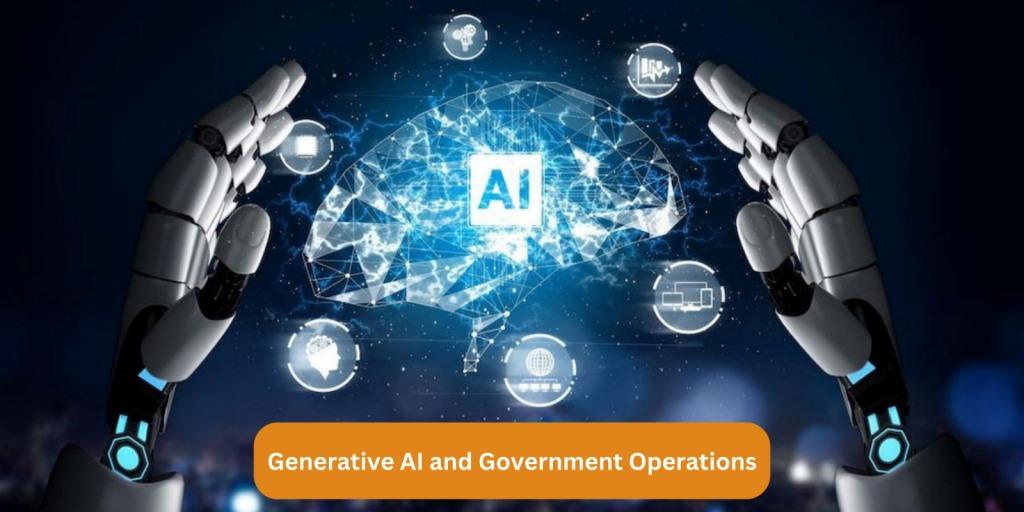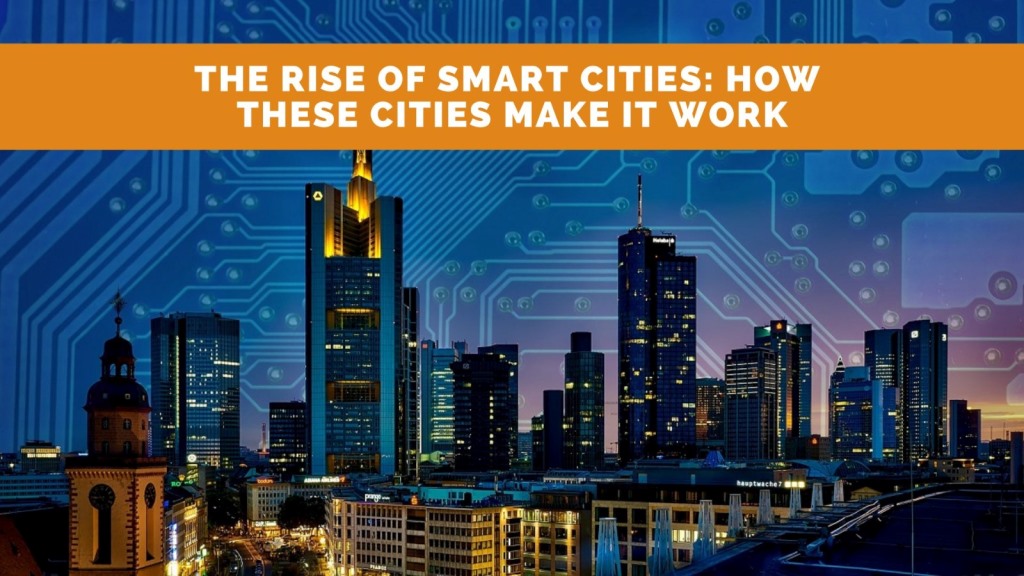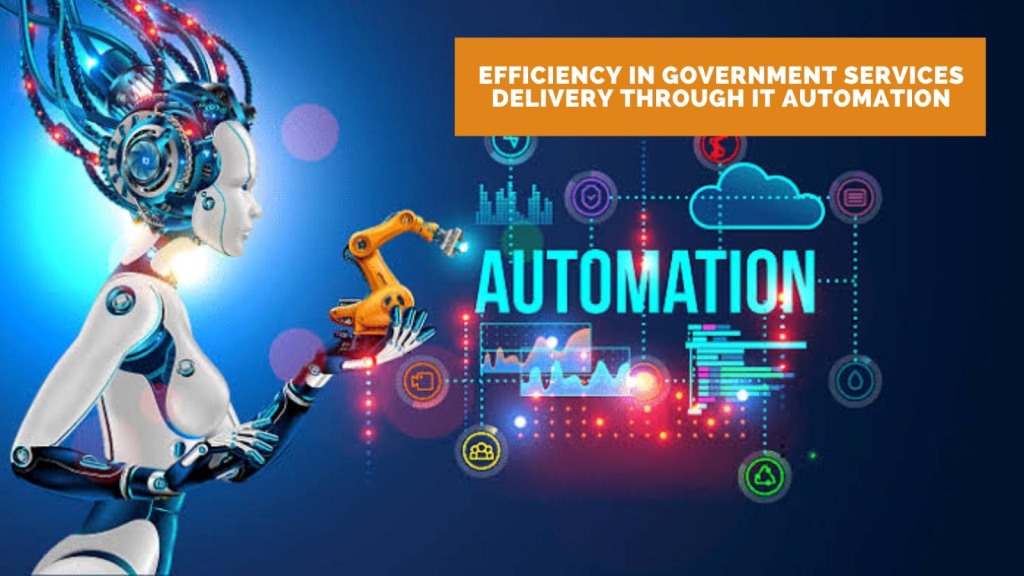Generative AI and Government Operations
Published on August 17, 2023
Automation has long been a topic of discussion within government technology circles, but recent advancements in generative AI tools have sparked a new wave of excitement and contemplation.
Among these tools, ChatGPT has emerged as a stunning example, captivating the internet with its ability to generate compelling content and transforming the way we think about artificial intelligence.
So, as the world evolves, it is imperative to explore the potential implications of generative AI on government operations.
What is generative AI?
Generative AI, also known as generative adversarial networks (GANs), is a subfield of artificial intelligence that focuses on creating new an original content.
Unlike traditional AI models that rely on pre-programmed rules or patterns, generative AI models are designed to generate new data by learning from existing datasets.
In the context of balancing innovation and the human touch in the generative AI era, Europe has taken a leading role in establishing guardrails around artificial intelligence.
Recognizing the significance of this topic, the White House also convened meetings with tech industry leaders, including Microsoft, Google, and OpenAI, the creator of ChatGPT to address the potential risks associated with AI.
How generative AI can support governments
● More accessible information
Traditionally, accessing government information and services can be a time-consuming and cumbersome process.
Citizens often face challenges in navigating complex bureaucracies, locating relevant information, and understanding intricate procedures.
Generative AI can address these hurdles by acting as a virtual assistant, simplifying information retrieval and streamlining communication between citizens and government entities.
● Answering citizen’s questions
Governments have already begun leveraging chatbots to provide assistance and information on topics such as pandemics, tax-related queries, and general inquiries.
With the integration of generative AI, these chatbots can handle more open-ended and complex questions, expanding their capabilities beyond simple predefined responses.
By tapping into the power of generative AI, chatbots become better equipped to provide rapid and accurate responses, anytime and anywhere, thereby enhancing accessibility for citizens.
● Discovering new public services
One significant advantage of generative AI in government operations lies in the discovery of new public services.
By leveraging AI-powered tools like ChatGPT, citizens can engage in interactive conversations, sharing their unique circumstances and needs.
These conversations can uncover service options that individuals may not have been aware of previously.
This personalized and tailored approach to public service delivery ensures that citizens receive the support they require while promoting inclusivity and efficiency.
● Internal Efficiency
Government can be complex even for government employees!
Providing public sector workers with the capacity to intuitively search and interact via chat with intranets and public sector materials in an automated fashion eases the onboarding of new employees, increases efficiency between silos and departments, and minimizes administrative burdens.
This capability lets public sector staff focus on their mission priorities, reducing burnout and allowing them to do more with less.
● Citizen engagement
Generative AI also has the potential to enhance citizen engagement and participation in government decision-making processes.
By providing interactive platforms powered by AI, governments can gather valuable insights and feedback from citizens on various policy matters.
These AI-driven platforms can facilitate open dialogue, enabling citizens to voice their opinions and contribute to shaping public policies.
This inclusive approach fosters transparency, accountability, and a stronger sense of civic participation.
● Deep Data
With its ability to process and analyze diverse datasets, generative AI models can identify connections and correlations between seemingly unrelated topics and domains.
By simply providing prompts, governments can leverage generative AI to reveal both expected and unexpected connections, thus stimulating the analytical process.
This technology empowers decision-makers to gain a comprehensive understanding of complex issues and make informed policy decisions based on a more holistic view of the available data.
The near future…or the present?
In the end, it is crucial to strike a delicate balance between leveraging generative AI to increase operational efficiency and maintaining the human touch that defines public service.
The opportunities presented by generative AI should not overshadow the significance of personal interactions and the empathy that public servants bring to their roles.
Policymakers are faced with a dual challenge.
On the one hand, they must navigate the potential pitfalls and ethical considerations associated with generative AI, ensuring that it is used responsibly and in line with the public interest.
On the other hand, they should seize the opportunities this technology presents, harnessing its capabilities to augment human efforts and enhance government operations.
In this generative AI moment, policymakers must embrace both the shadows created by the technology’s challenges and the opportunities it offers.
By doing so, they can guide its implementation in a way that upholds the values of public service, supports human connections, and maximizes the benefits for citizens.
About the Author
Mohammad J Sear is focused on bringing purpose to digital in government.
He has obtained his leadership training from the Harvard Kennedy School of Government, USA and holds an MBA from the University of Leicester, UK.
After a successful 12+ years career in the UK government during the premiership of three Prime Ministers Margaret Thatcher, John Major and Tony Blair, Mohammad moved to the private sector and has now for 20+ years been advising government organizations in the UK, Middle East, Australasia and South Asia on strategic challenges and digital transformation.
He is currently working for Ernst & Young (EY) and leading the Digital Government practice efforts across the Middle East and North Africa (MENA), and is also a Digital Government and Innovation lecturer at the Paris School of International Affairs, Sciences Po, France.
As a thought-leader some of the articles he has authored include: “Digital is great but exclusion isn’t – make data work for driving better digital inclusion” published in Harvard Business Review, “Holistic Digital Government” published in the MIT Technology Review, “Want To Make Citizens Happy – Put Experience First” published in Forbes Middle East.
More from Mohammad J Sear





